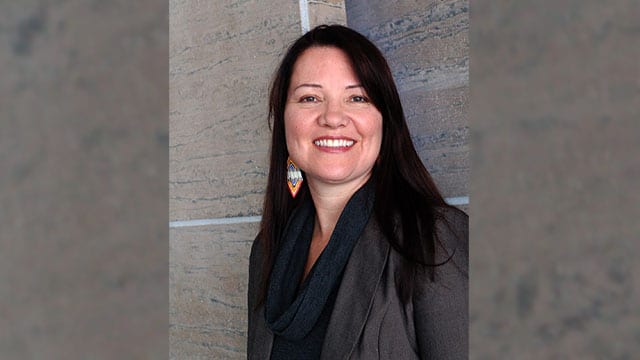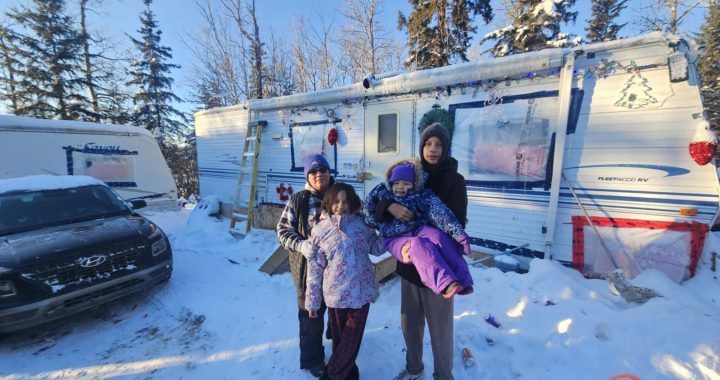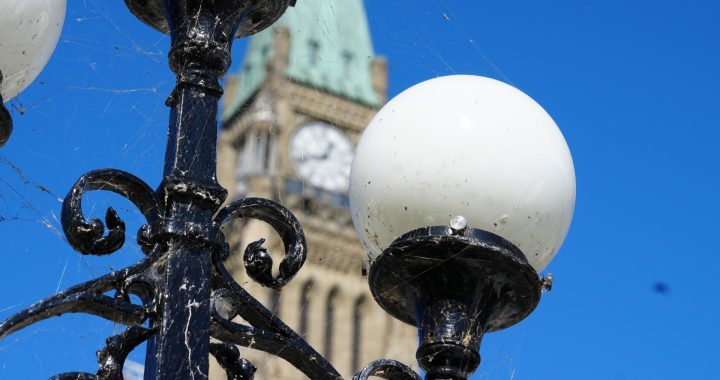
Last Saturday Kahente Horn-Miller’s weekend was interrupted by a text message from her 25-year-old daughter Karonhioko’he.
It read: “What can I do about this?”
Karonhioko’he was contacted on social media by a filmmaker writing a script based on her name. The filmmaker wanted to know how to pronounce “Karonhioko’he” and was searching for more details regarding Mohawk culture.
“You’re mining our language for profit, and it has to stop,” is how Horn-Miller describes her immediate reaction.
The 46-year-old Kanien’kehà:ka (Mohawk) woman from Kahnawà:ke Mohawk Territory became further incensed when the filmmaker responded to the family’s concerns by stating “names aren’t covered by copyright law”.
“When you are appropriating our names, and misusing them and misrepresenting us, that’s a whole other level of insult,” said Horn-Miller.
This is because Kanien’kehà:ka custom places a great importance on naming newborns.
“We are all supposed to have our own individual names, none of us are supposed to have the same names, which is a very different tradition in western society where multiple people have the same names,” explained Horn-Miller.
“So when a baby is born it’s up to the family to help find the name. It’s a spiritual process because the name is associated with the birth of a child and the circumstances around the birth, the name comes out of our relationship, or that baby’s relationship to the natural world when they arrive.”
For example, the name Karonhioko’he translates as “she takes the sky out of the water,” which was bestowed upon her after consultation with clan mothers. Which for Horn-Miller, begs the question, how did the filmmaker come across the name in the first place?
“I went looking and we found this website ‘behindthename.com’, based out of British Columbia and lo and behold there was her name. And there was my name, and my sister Waneek’s name, and my mother’s name, and my niece’s name,” said Horn-Miller, who says the website complied when asked to have the names removed.
“I’m encouraging other Indigenous people to look at the site, find other sites, and encourage them to take these names down because of how important they are to our people,” said Horn-Miller.
When asked under what circumstances a non-Indigenous artist could incorporate Indigenous culture into their work, Horn-Miller said it must start with permission first.
“You go to a community and say, ‘hey, I’m writing this script, I’d like to write about your people are you willing to share anything with me about this? There’s protocols around this, where we need to be asked first, not last,” explained Horn-Miller, who is an assistant professor at the School of Indigenous and Canadian Studies at Carleton University.
“For example at the university, we have very strict guidelines on how to do ethical research, where you now have to go to a community, you have to ask, ‘can I do this research in this community,’ then ‘can you help me do this, what kind of questions should I ask, who do I need to ask, what kind of research is useful to you? How can I give back?’ These are things we’re asking in the university, but this is not happening in artistic fields.”
Horn-Miller isn’t the only one to articulate these thoughts. In his 2018 reference book, Elements of Indigenous Style Cree publisher and university professor Gregory Younging outlines twenty-two principles of culturally appropriate publishing practices, which include seeking permission, collaboration, not assuming copyright or public domain over oral stories or traditions, and sharing royalties with communities when using aspects of their culture.
“Don’t just take our stories and tell them and think that it’s right and it’s okay, because it’s not,” said Horn-Miller, who added that the filmmaker has agreed to remove references to Karonhioko’he’s name from the script.
However, Horn-Miller has since found a novel where her name and that of her sister’s is used. Despite her frustration, Horn-Miller hopes speaking about these incidents will deter people in the future from committing cultural appropriation, but without quashing sincere interest in Indigenous culture.
“A majority of it we can’t share, but there are some things we should share, because of the importance of building these kids of bridges of understanding,” concluded Horn-Miller “but this has to happen in a proper way. With us, not for us and not over our heads.”











Yes she’s right just once I would like to see not only these people but the government be more open minded about our ways. Such as we look at seven generation s both forward but also behind.There are familys out here where half of a family kids have their status and the other can’t get their kids their status, because their father sold all the status rights away. There for half the familys kids are being denied their brith rights be could the government can say who are native who are not.I feel if that is the case then the government should take away the hayteagu rights from all people that come to our land we call turtle island
Yes she’s right just once I would like to see not only these people but the government be more open minded about our ways. Such as we look at seven generation s both forward but also behind.There are familys out here where half of a family kids have their status and the other can’t get their kids their status, because their father sold all the status rights away. There for half the familys kids are being denied their brith rights be could the government can say who are native who are not.I feel if that is the case then the government should take away the hayteagu rights from all people that come to our land we call turtle island